April 2025

The global scaffold technology market was estimated at US$ 2.05 billion in 2023 and is projected to grow to US$ 8.58 billion by 2034, rising at a compound annual growth rate (CAGR) of 13.9% from 2024 to 2034. Scaffolds are in high demand due to the growing research and development around stem cells and growing organs in laboratories for transplanting. It is also in high demand for studying diseases and therapeutic drugs without using any animal models and/or humans as test subjects.
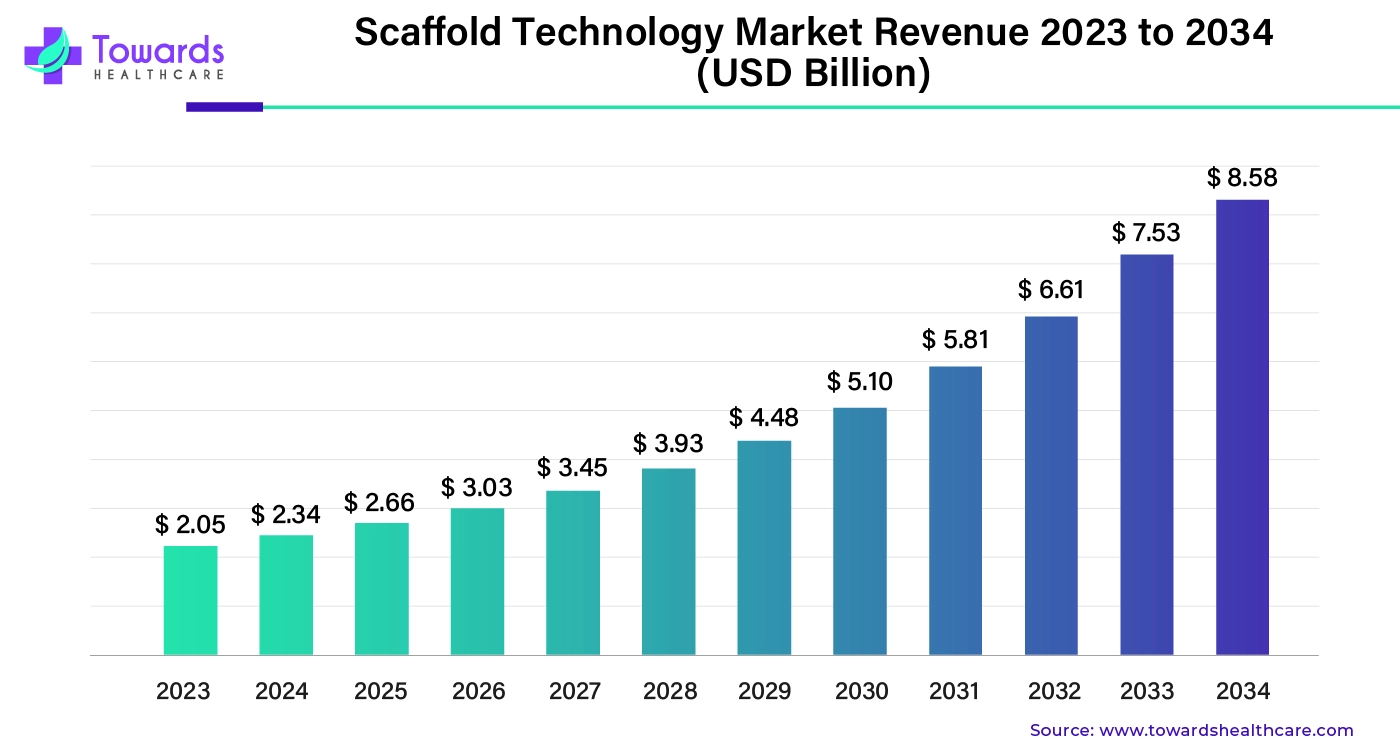
Scaffolds are like molds made out of polymers, PGA, PEG, PLGA, PLC, PLA, and propylene fumarate for the purpose of tissue engineering. Tissue engineering is a process of developing monolayers, spheroids, and organoids using different human cells. Tissue engineering has turned out to be an important field for the development of biological substitutes for restoring, replacing, and regenerating defective tissues. Scaffolds play a significant role in the development of organoids because, without scaffolds, it is not possible to develop a properly structured organoid. The scaffold technology market is growing due to the growing demand for drug development, drug discovery, tissue and organ transplant, and stem cell research.
Technological advancements have played an important role in the growth and development of the tissue engineering industry and scaffold technology market. The integration of AI and machine learning has become crucial in providing support during the entire process of scaffold building and tissue engineering. In scaffold development, AI and machine learning can be used to select materials and design by analyzing existing data. In the case of tissue engineering, AI and machine learning are used in biomaterial design, computational modeling, and cell culture optimizations. Currently, the organoids developed using scaffolds have certain issues. These issues can be resolved using AI data analysis and AI suggestions to improve the current technology.
| Company Name | CytoNest Inc. |
| Headquarters | Maryland, U.S., North America |
| Recent Development | In August 2024, an innovative fiber scaffold that enhances tissue engineering and cell production was the first commercial product of the University of Georgia firm CytoNest Inc., which debuted last month. The device, known as the CytoSurge 3D fiber scaffold, has uses in the generation of cultured meat and seafood, biopharmaceuticals, cell therapies, and cell research. |
| Company Name | Tempo Therapeutics |
| Headquarters | California, U.S., North America |
| Recent Development | In September 2024, the first human study for Tempo Therapeutics' tissue regeneration product, TT101, began with patients who have had surgical resection. An integrative scaffold with the ability to regenerate soft tissue is called TT101. The clinical trial is being funded by proceeds from a $12 million Series A investment transaction that was obtained in March. |
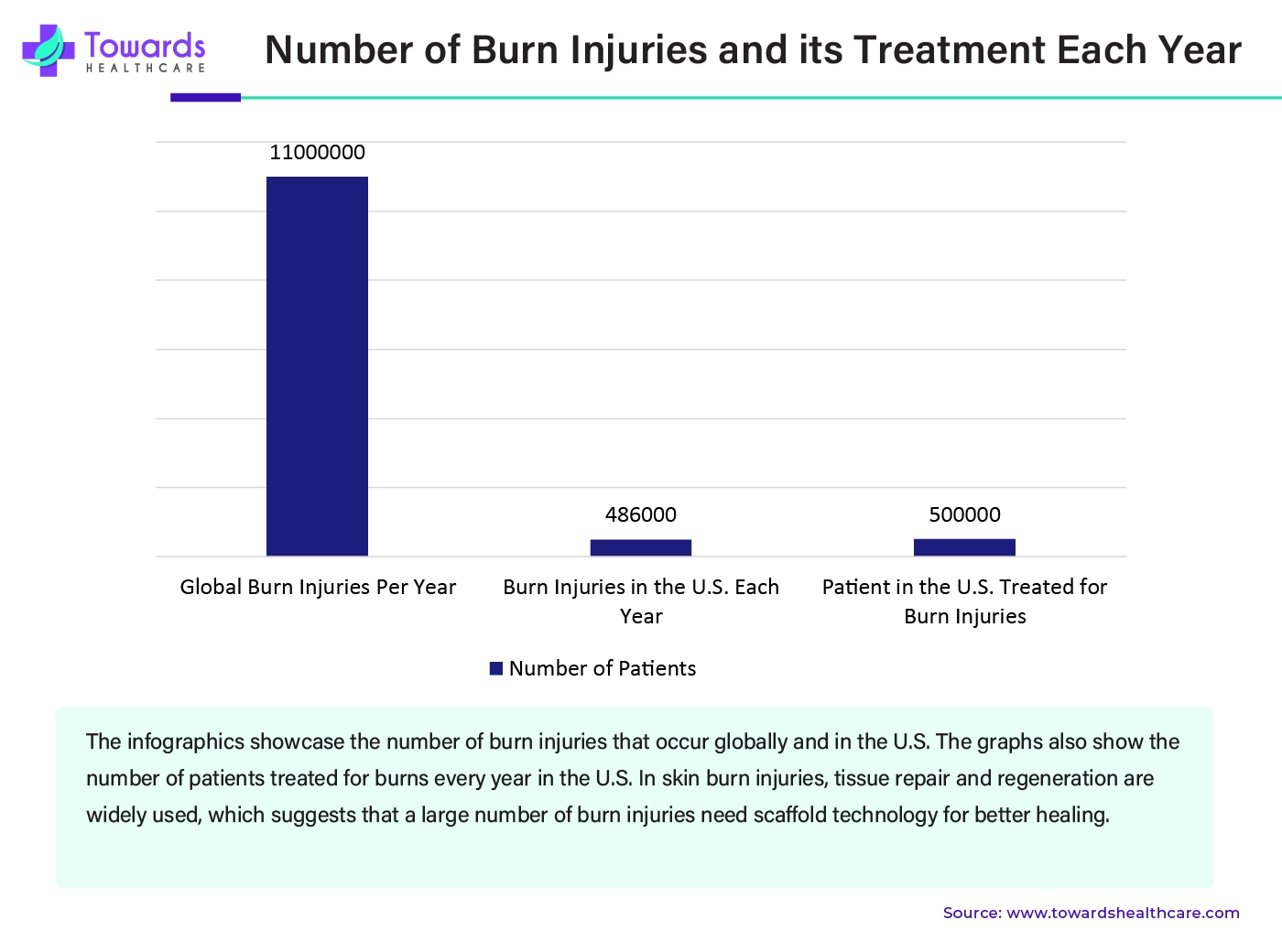
Due to severe injuries that can occur due to accidents, burns, or other reasons, the human body is not able to repair tissues on its own, due to which tissue engineering using scaffold technology is used for tissue repair and tissue regeneration. Scaffolds provide a suitable and controllable environment for the growth and development of 3D tissue structures, which can be used to replace damaged tissues. The use of tissue engineering has recently increased for developing personalized therapeutics because the cells used for tissue repair are taken from the same person who is going to be used, which reduces the chances of graft rejection.
Scaffolds are essential for developing 3D tissue structure because they provide structure and a proper growth environment, and external factors can be controlled. However, due to the emerging scaffold-free cell culture technology, the demand for scaffolds is going down. There are several advantages of this technique, which is why researchers and healthcare professionals are inclined to use it. In order to increase the usage of scaffolds, researchers have to come up with solutions to mitigate the current faced by tissue engineers while using scaffolds.
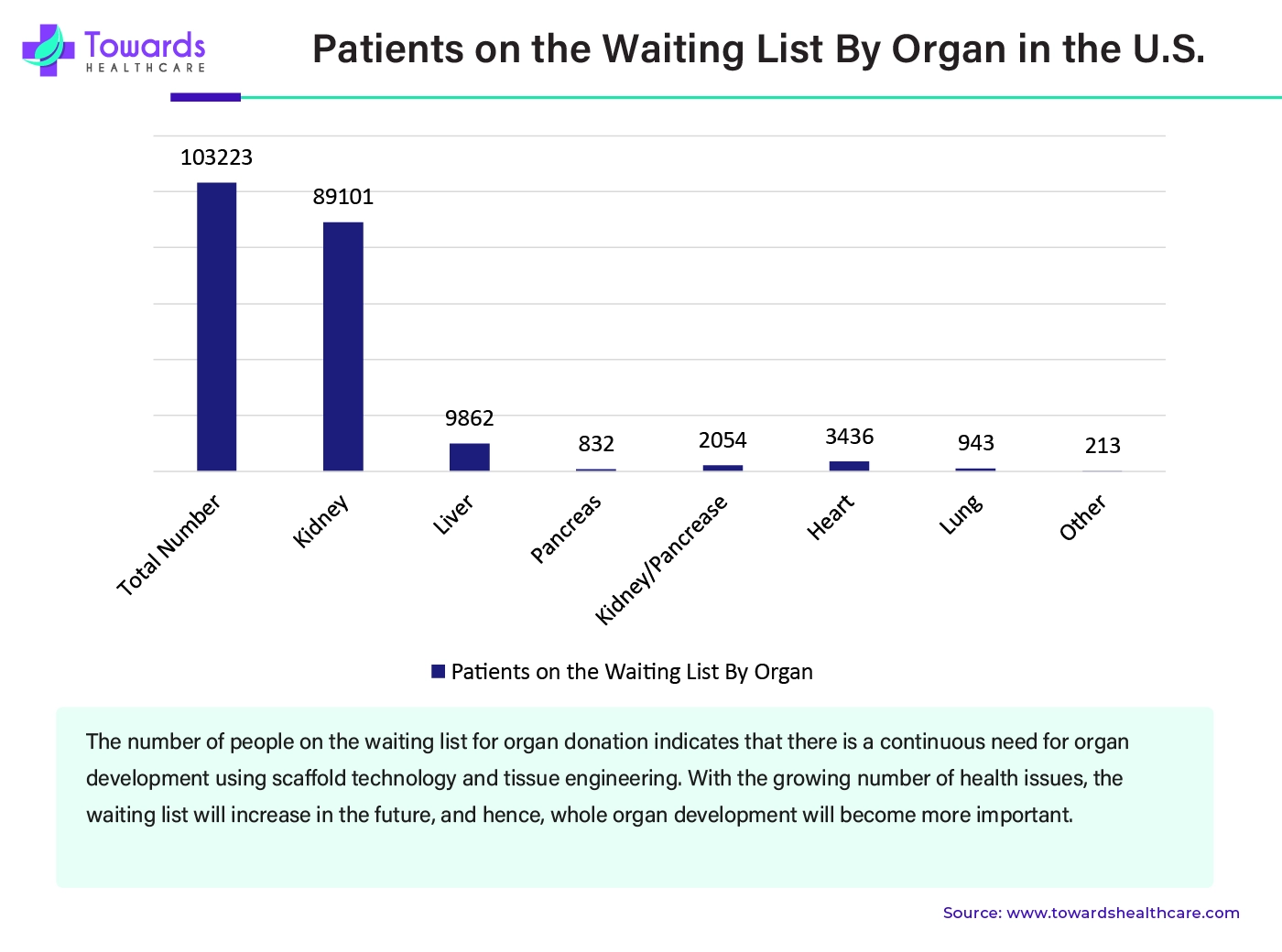
In the case of organ failure, organ donation has become the only way of saving lives. Every year, a lot of people wait to get organs, and every 8 minutes, another person is added to that list in the U.S. Despite waiting and continuous efforts, the chances of organ incompatibility or organ failure cannot be avoided. To avoid this, scaffold technology for developing whole organs can be used. Currently, there are many issues with this technique, but in the future, with technological advancements and with the help of AI and machine learning, better solutions can be developed that can be used for organ generation. Also, cells of the same person will be used, and then the organs will be highly compatible and personalized.
By type, the hydrogels segment held the majority of the scaffold technology market share in 2023. Hydrogels are similar to natural extracellular matrices when it comes to composition and structure. Hydrogels are also compatible with cell survival and proliferation. Due to these advantages, hydrogels are highly recommended for developing scaffolds. The use of hydrogels also mitigates the challenges such as vascularization. With the growing need for scaffold-based tissue engineering, the demand for hydrogels is also going to grow in the market.
For instance,
By type, the nanofiber-based scaffolds segment is anticipated to grow at the fastest CAGR in the scaffold technology market during 2024-2034. The possibility of creating scaffolds that might be able to solve this issue has been substantially expanded by the creation of nanofibers. The possibilities for creating nanofibrous scaffolds have increased due to the abundance of both natural and manmade biomaterials. The possibility of creating scaffolds that may be able to replicate the structure of native human tissue at the nanoscale has increased with the creation of nanofibers.
For instance,
By disease, the orthopedics, musculoskeletal, and spine segment dominated the scaffold technology market in 2023. It is estimated that there will be 4115046 hip fractures by the year 2050. Osteoporosis is a common issue that occurs due to old age, and more than 8.9 million people suffer from bone fractures due to osteoporosis. According to the WHO, around 1.71 billion people have musculoskeletal conditions across the globe, which is a leading cause of disability. People on a global level suffer from various health issues, such as fractures (440 million), low back pain (570 million), neck pain (222 million), osteoarthritis (528 million), amputations (180 million, gout (54 million), rheumatoid arthritis (18 million), and other musculoskeletal conditions (453 million).
With this growing number of bone-related injuries and health conditions, the need for scaffold technology for tissue engineering is in high demand. With the growing geriatric population, the number of bone-related issues is going to grow in the future.
The neurology segment is estimated to grow at the fastest rate in the scaffold technology market during the predicted period. Neural degeneration is a common issue in old people, which leads to various degenerative brain diseases like dementia, demyelinating diseases, Parkinson’s disease, motor neuron diseases, and prion diseases. Neural tissue engineering has great potential in repairing damaged nerve tissues. With growing potential in neurology, governments and key players are making investments in developing better treatment options using scaffold-based neural tissue engineering.
For instance,
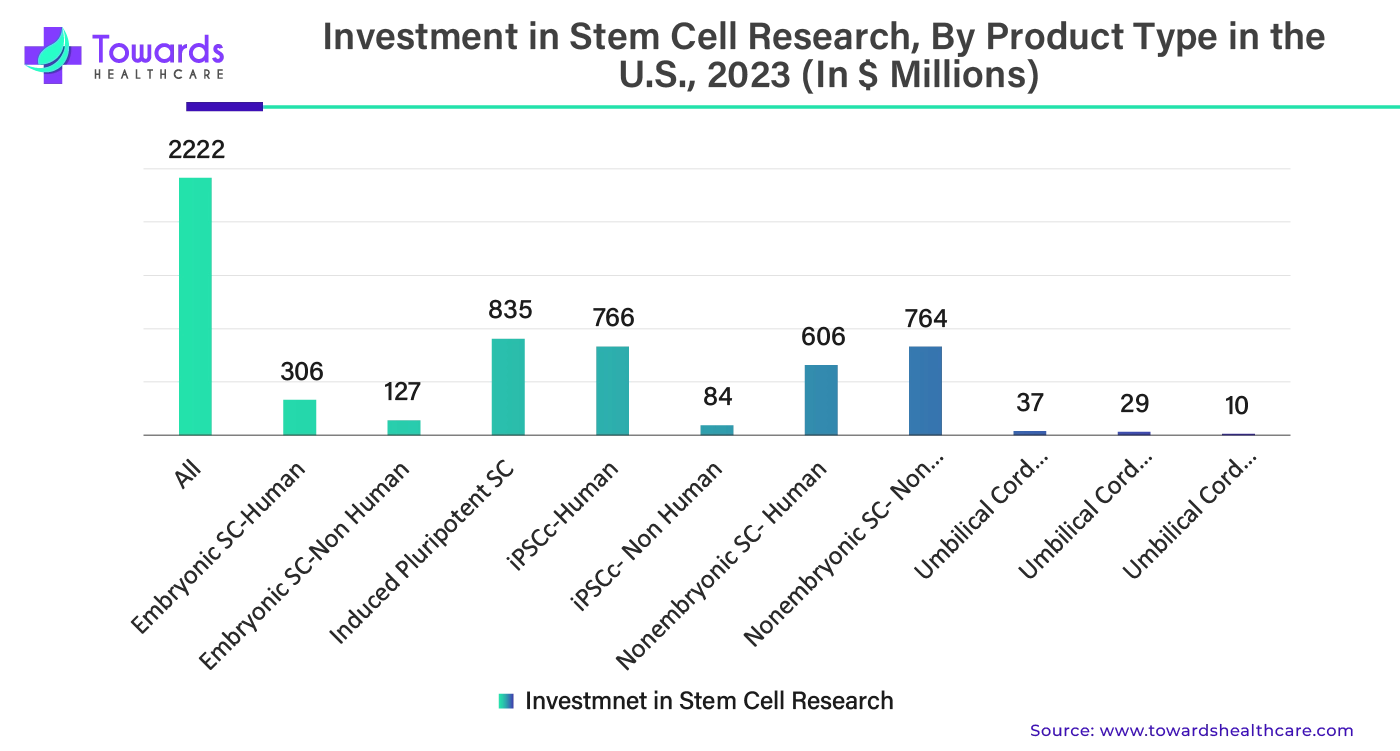
By application, the stem cell therapy, regenerative medicine, and tissue engineering segment emerged as the dominant segment in the scaffold technology market in 2023. Stem cell therapy consists of growing stem cells in vitro via tissue engineering and then transferring them to the human body for therapeutic purposes. Because tissue engineering is a significant part of stem cell therapy, scaffolds are extensively used for growing stem cells. With the growing demand for precision and personalized medicine, stem cell therapy is also growing, which is positively impacting the market’s growth.
By end-use, the pharmaceutical & biotechnology companies segment held the largest share of the scaffold technology market in 2023. Pharmaceutical and biotechnology companies are highly invested in developing new drugs and therapeutics. Scaffold technology helps in tissue engineering, which is further used for testing & developing new drugs, developing cell and gene therapies, and studying various systems of cells and organs. During the R&D and production, various tests are conducted on animal models and human cells. Scaffold technology helps researchers in companies develop 3D structures of organs, which helps in better understanding and reduces the usage of animal models.
By region, North America dominated the scaffold technology market share by 43% in 2023. The U.S. and Canada are the major contributors to the market’s growth in North America. The U.S. government and key companies in the U.S. continuously invest in research and development in tissue engineering, biotechnology, pharmaceuticals, personalized medicine, therapeutics, and other sectors. Various regenerative medicine programs have been started in the U.S. that will support the growth of the scaffold technology market.
The California Institute of Regenerative Medicine, which is the largest institution focusing on regenerative medicine, was awarded US$ 43.8 million for stem and gene therapy research. CIRM has 91 CIRM-funded clinical trials and 200+ clinical trials conducted at Alpha Clinics. CIRM has received more than US$ 24 billion in funding from pharmaceutical and biotechnology companies and also from other partnerships. More than 50 new startup businesses are associated with research projects that are funded by CIRM. Various diseases in which CRIM is involved are neurological disorders/injuries (35%), respiratory (6%), heart (3%), musculoskeletal (10%), cancer (20%), HIV/AIDS (3%), blood (6%), and eye (4%). For the fiscal year, a proper budget was allocated, which included US$ 252 million in clinical research, US$ 84.7 million in discovery research, and US$ 84.6 million in translational research.
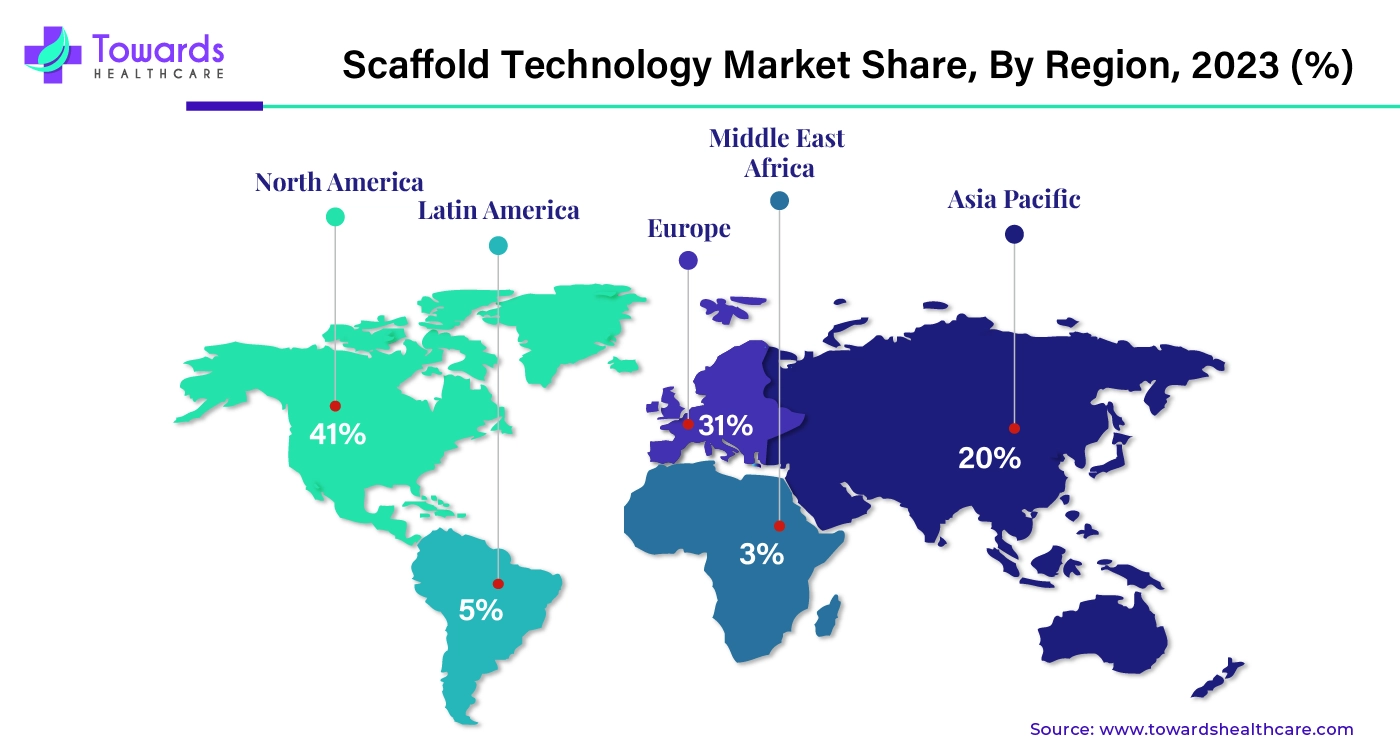
By region, Asia Pacific is expected to grow at the fastest rate during the forecast period. The government and various organizations in the Asia Pacific region are focusing on better healthcare and personalized therapeutics, due to which they are investing in the pharmaceutical and biotechnology industries. The major countries that contribute to the growth of the scaffold technology market are China, India, Japan, and South Korea. The growing population and various diseases in the region further promote the growth of the market.
China majorly contributes to the growth of the scaffold technology market due to the large presence of the biotechnology and pharmaceutical industries. In 2023, the health and pharmaceutical industry in Beijing reach CNY 980 billion. In Beijing, CNY 30 million in support was provided for gene therapy drugs and CNY 500,000 for biological products.
The Government is strongly investing in the research associated with regenerative medicine. Apart from this, various biotechnology and pharmaceutical companies are involved in the development of better healthcare. For instance, in 2022, there were 1390 new biotech startups in India. In 2022, the biopharma industry contributed US$ 49.8 billion to the bioeconomy of India.
By Type
By Disease
By Application
By End-Use
By Region
April 2025
April 2025
April 2025
February 2025